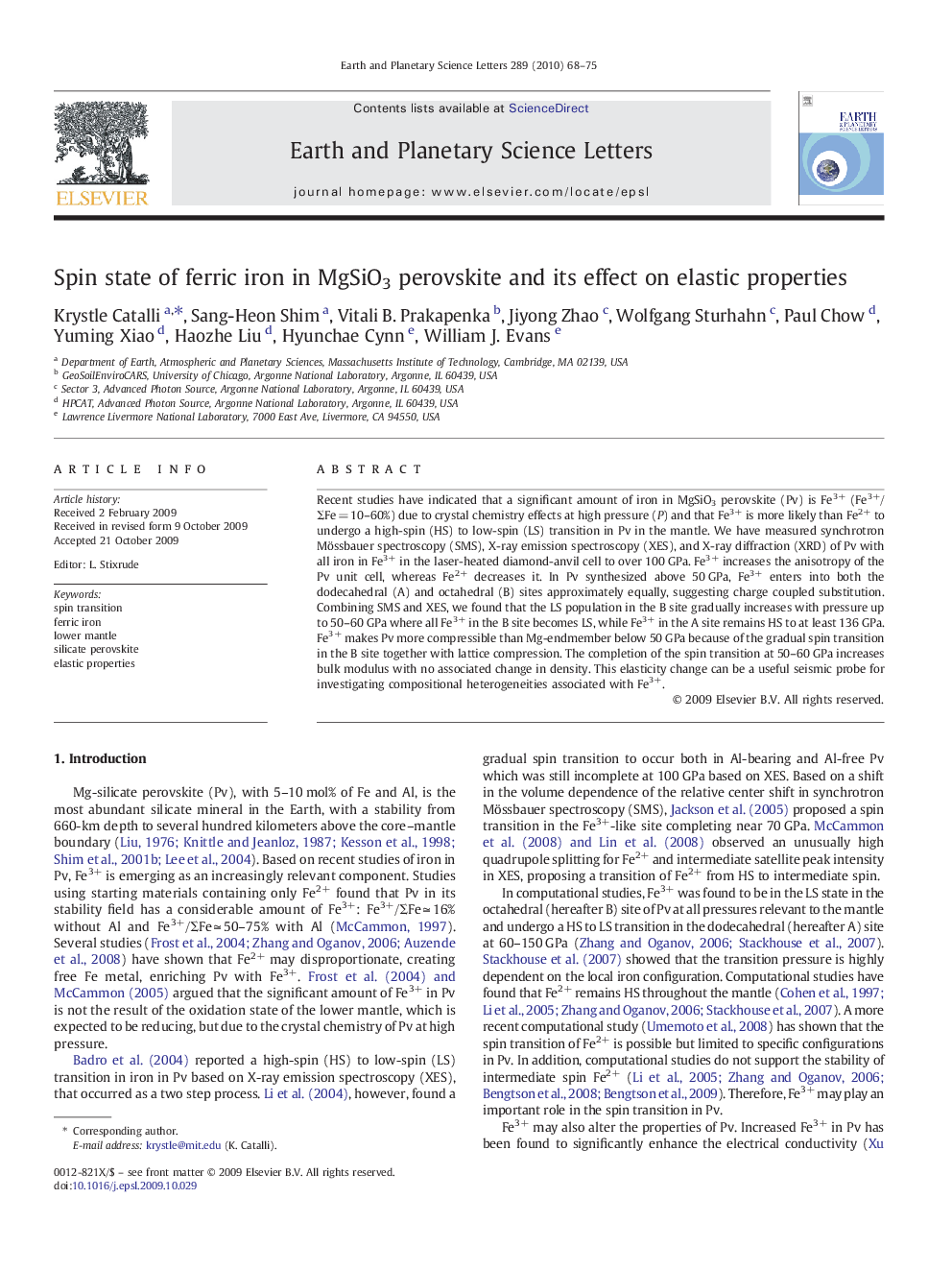| Article ID | Journal | Published Year | Pages | File Type |
|---|---|---|---|---|
| 4678837 | Earth and Planetary Science Letters | 2010 | 8 Pages |
Recent studies have indicated that a significant amount of iron in MgSiO3 perovskite (Pv) is Fe3+ (Fe3+/ΣFe = 10–60%) due to crystal chemistry effects at high pressure (P) and that Fe3+ is more likely than Fe2+ to undergo a high-spin (HS) to low-spin (LS) transition in Pv in the mantle. We have measured synchrotron Mössbauer spectroscopy (SMS), X-ray emission spectroscopy (XES), and X-ray diffraction (XRD) of Pv with all iron in Fe3+ in the laser-heated diamond-anvil cell to over 100 GPa. Fe3+ increases the anisotropy of the Pv unit cell, whereas Fe2+ decreases it. In Pv synthesized above 50 GPa, Fe3+ enters into both the dodecahedral (A) and octahedral (B) sites approximately equally, suggesting charge coupled substitution. Combining SMS and XES, we found that the LS population in the B site gradually increases with pressure up to 50–60 GPa where all Fe3+ in the B site becomes LS, while Fe3+ in the A site remains HS to at least 136 GPa. Fe3+ makes Pv more compressible than Mg-endmember below 50 GPa because of the gradual spin transition in the B site together with lattice compression. The completion of the spin transition at 50–60 GPa increases bulk modulus with no associated change in density. This elasticity change can be a useful seismic probe for investigating compositional heterogeneities associated with Fe3+.
